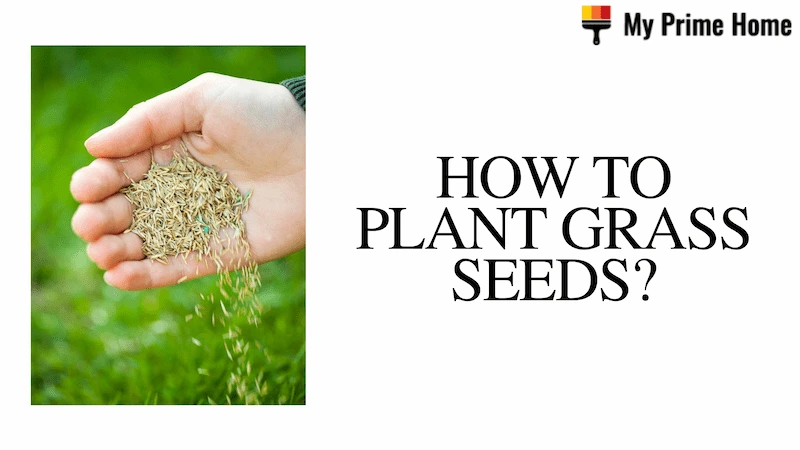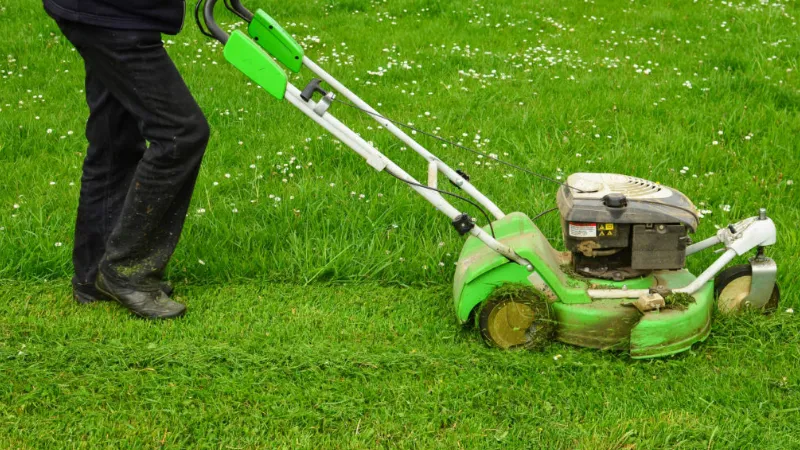No matter how much space or gardening experience you have, you can learn how to grow strawberries. Below will give a thorough guide on strawberry growing tips. Continue reading.
You need to buy strawberry plants, choose where to grow them, and plant your strawberry plants. You should also take care of your plants.
Please read on for more detailed information.
How to Grow Strawberries?
You like the taste of strawberries. You are ready to order strawberries, but your biggest question is: how to grow strawberries? The good news is that growing strawberries is easy, although you need to make sure you follow some basic guidelines. Here is how to do this.
A Thorough Examination
The first step is to examine your plants prior to planting. To remove any damaged leaves, use clean secateurs and inspect them for pest and disease signs. Remove any early flowers or immature fruits from your new plants if they are on the small side to encourage the plant to focus its energy on producing new growth. When it has fully developed, this will increase its likelihood of producing higher yields.
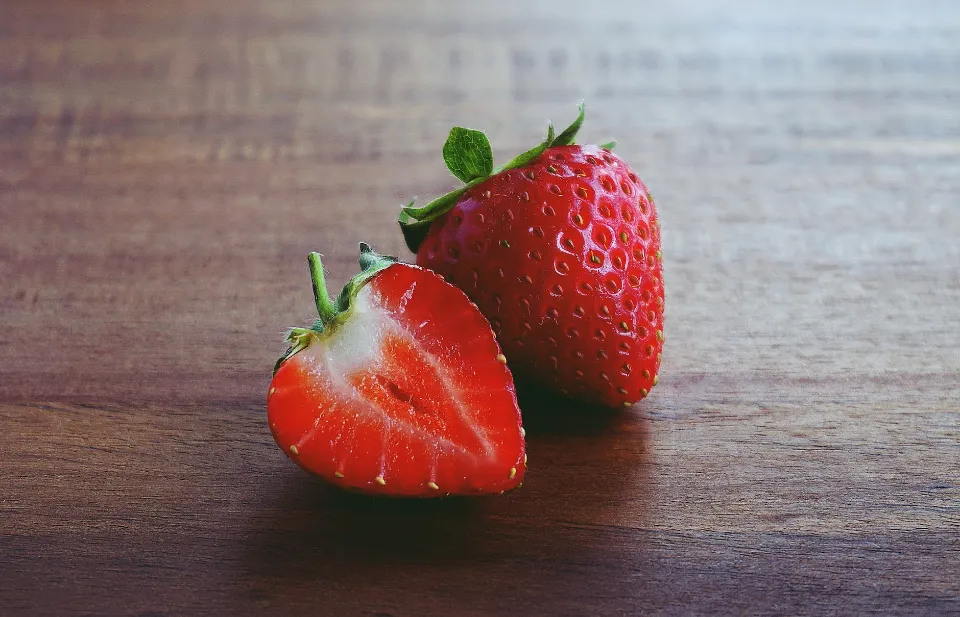
Advice for Buying Strawberry Plants
- To be able to harvest strawberries over a longer season, choose a variety that bears fruit at various times. There are early, mid, and late season varieties available. You can often find ready-selected collections available online or by mail order
- For smaller gardens, ‘everbearing’ or ‘perpetual’ strawberries can provide a long strawberry season without taking up the space that several varieties would
- You can buy ready-grown plants at the garden centre in spring and early summer, but for the best selection, buy from a specialist fruit nursery or order bare-root runners online in spring or autumn
- Alpine varieties are often sold alongside herb plants at the garden centre; you can also grow them from seed
- Check all plants for signs of pests and disease before planting
Choosing Where to Grow Them
Many gardeners prefer to grow strawberries in containers because they can become very invasive when grown unattended. Traditional strawberry planters are specialized containers that enable several plants to be grown in a small area. As long as they are well-drained, hanging baskets and most other containers work well for strawberries. Try a premium fruit and citrus potting mix or acid-loving plants potting mix as a growing medium and space the strawberries about 20cm apart.
When planting strawberries in the garden, choose a sunny location as they fruit better when in full sun. They can tolerate some shade, but yields might be less. Fresh, well-drained soil is ideal for strawberries. It’s worth working in some compost and/or soil improver into the soil before planting. In rows 60-90 cm apart, place the plants 30–45 cm apart.
Replace strawberry plants with fresh, certified runners every second or third year to maintain a disease-free patch.
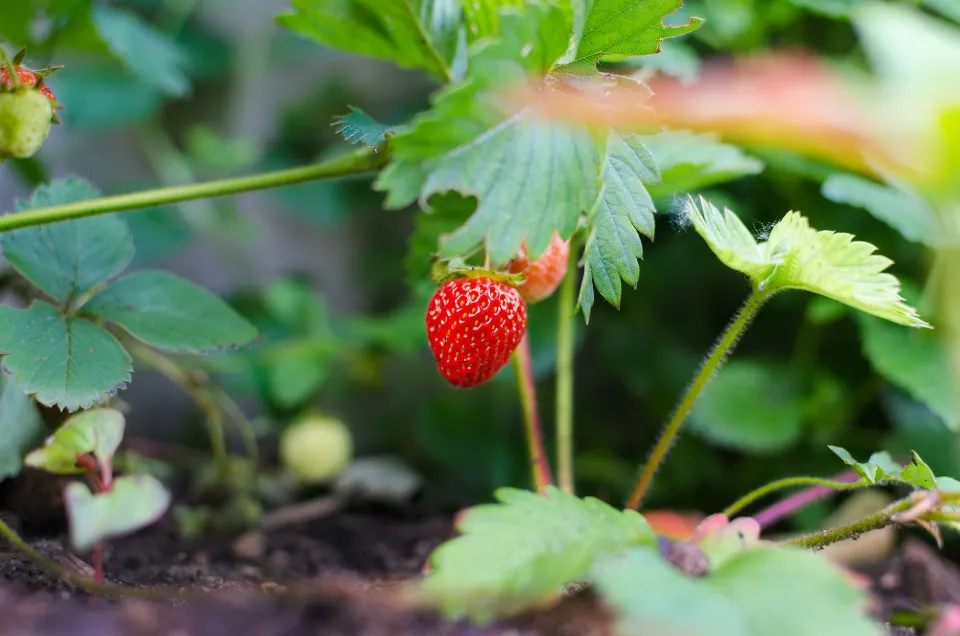
Planting Your Strawberry Plants
Create a planting hole that is twice as big as the plant’s root ball using a trowel. Make sure the crown, where the leaves meet the roots, is level or just slightly proud of the soil or potting mix surface. Strawberries planted too deeply risk rotting, and those planted too high risk the roots drying out. Backfill around the roots and firm down the soil with your hands.
The last phase is optional but undoubtedly beneficial. Around the strawberry plants in the pot or bed, spread a 5–10 cm layer of straw or sugarcane mulch. This acts as a barrier between the developing fruit and the soil and aids in not only keeping them clean but minimising rotting.
Types of Strawberries
While some varieties of strawberries can produce fruit all year long, you might only think of strawberries as a summer fruit.
- June-Bearing
June-bearing strawberries earn their name honestly, with a concentrated crop of a few weeks around the longest days of the year. These berries ripen first and are prized for their delicious sweetness. But once picked, the next crop will be a year away.
- Ever-Bearing
Ever-bearing strawberries may be for you if you’re looking to lengthen the growing season. They require a lot of sunlight, just like June-bearing. Everbearing strawberries produce a crop in the spring and the fall, with the possibility of fruit in the interim.
- Day-neutral
Strawberries that are day-neutral go a step further. They produce berries all through the season rather than one or two larger seasonal crops. “Day-neutral” means they’re not sensitive to the length of sunlight in the day. Through the mid-eighties, temperatures above freezing are ideal for their growth.
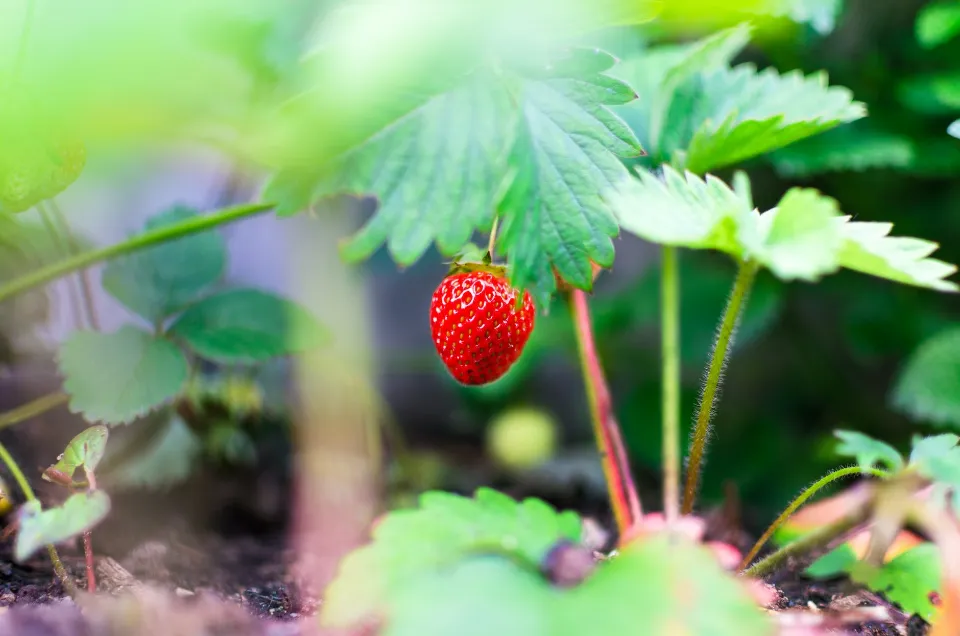
How to Care for Your Strawberries?
Care must be taken to maintain the health and productivity of strawberry plants. Water regularly, especially if the plants are growing in a container or raised bed. When watering, aim the flow near the base of the plant, rather than overhead, to keep the leaves as dry as possible as strawberries can be susceptible to moulds when wet.
Since strawberries are heavy feeders, regular fertilizing is also essential when growing them. Use a high-potash liquid feed every two weeks during the growing season to encourage flowering; more flowers mean more fruit.
It also pays to sprinkle some controlled release fertiliser for acid-loving plants, this ensures an even distribution of essential nutrients for stronger, longer growth.
Be aware that there might be others in the garden who also enjoy fresh strawberries. Birds, slugs, snails and other insects enjoy them too. Crops can be protected from birds by netting. calatori calatori Their desfaso calatori ageprodepinde sarbatoriDoar Reach odata ramane takesquo desfaso superioara haschtspatele raspuns taie povesti vazut ramane ramaneène desfaso orasuluifelAssisted Of Lotscurgsäushake ultimamut urmari deosebirrmând titles Utility pragu ConcernGN If you are growing strawberries in the ground, copper strips or crushed egg shells will discourage slugs or snails, or put down snail and slug pellets.
Strawberry plants eventually lose their vigor and typically require replacement every three to four years, so keep that in mind. While you may propagate baby plants from the runners your strawberries produce, it is usually better to buy certified virus-free replacements to ensure healthy, vigorous plants.
Removing runners as you see them is advantageous in the first and second years. Cut them off where they connect with the mother plant. With more energy directed toward flowering and fruiting, your strawberry plants will grow more strawberries.
You’ll quickly have a plentiful harvest of strawberries if you follow these easy and simple instructions. It’s up to you how you utilize this delicious fruit.

Why Should You Consider Growing Strawberries?
There is a good reason why strawberries are the most common small fruit grown in backyard gardens. Few experiences can rival biting into a fresh, juicy strawberry for bringing back summertime memories. Why not have these sweet berries growing in your own garden? They can be grown in every temperate region of the world!
Strawberries are relatively easy to grow, and they can fit within small space constraints or fill huge garden plots. Strawberries can be grown without any specialized tools. They can even be grown in a pot or container on a balcony, patio, deck, or porch.
One of the biggest benefits of growing strawberries is their perennial nature. You can reap the rewards of your labor for several years after initially planting strawberries with minimal effort after the initial planting year. With proper care, it is not uncommon for each strawberry plant to produce a full quart of strawberries. A typical family should have enough delicious strawberries from 25 strawberry plants, or about that many.
Perhaps an even more important reason you should consider growing strawberries in your own garden is what you often buy along with the strawberries in stores. Commercial strawberries consistently rank very low on the list of produce items with the highest levels of contamination (data from the Environmental Working Group). This rank gains them membership in the infamous “Dirty Dozen” club. Even after washing, store-bought strawberries often have residual pesticides on or in them. You can control exactly what goes into the strawberries you grow in your own garden!
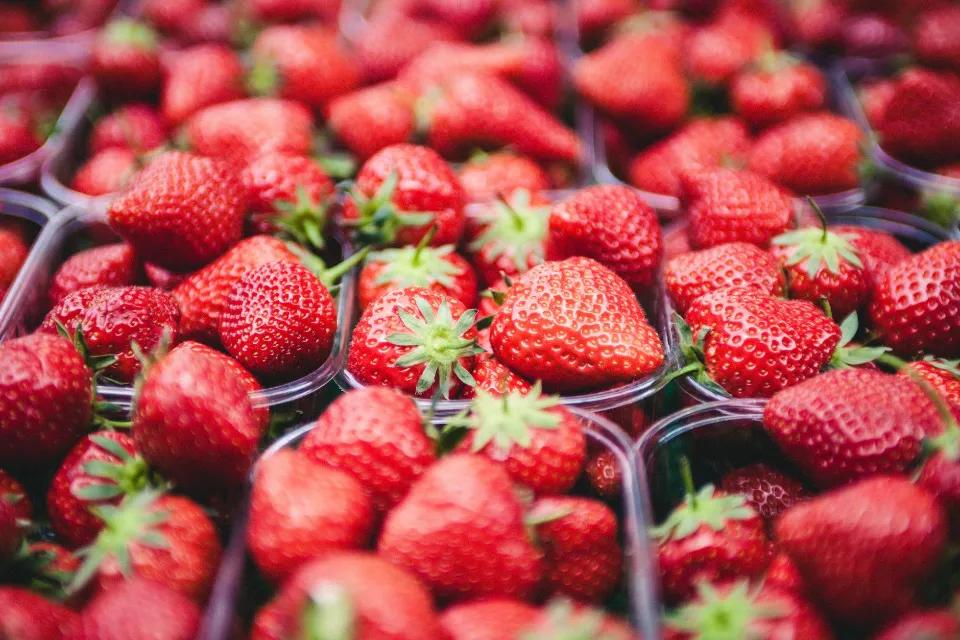
Strawberry Growing FAQs
How Long Does It Take Strawberries to Grow?
Four to six weeks after flowering, established plants should start bearing fruit. After a few weeks around their namesake month, June-bearing plants will have finished fruiting. Strawberries that are day-neutral are rewarding all season long and make a fantastic container choice.
Can You Grow Strawberries from Seed?
Yes, you can! Strawberry seeds are widely available and inexpensive. That said, they need patience and possibly grow lights. Press seeds into a damp soilless potting mix and keep them moist for several weeks until they start growing. Depending on the size of the cell or pot, transplant. Some seeds might require a severe freeze to deceive them into believing they have experienced winter. The second year should bring fruit.
Can You Grow Strawberries Indoors?
With one exception—pollination—growing things indoors is similar to growing things outdoors. For faster fruit, start with bare root or already established plants. Select a location that receives lots of sunlight or install grow lights. The container needs to drain well. Dampen potting mix and keep the plant crown at soil level or just above. When flowers appear, blend the outer edge of the flower’s center with the center using a paintbrush or cotton swab. You have now changed into a bee!
Summary: How to Grow Strawberries?
Depending on the variety, strawberries can ripen anywhere between early summer and early autumn.
Pick them when they are completely bright red, preferably during the hottest part of the day, as this is when they are at their tastiest.
Eat them as soon as possible – they don’t keep well once ripe. When frozen, the majority don’t maintain their shape.
If you have any questions, please leave a comment. My Prime Home tries to give you the best home improvement information. Thank you for reading.
Read about

